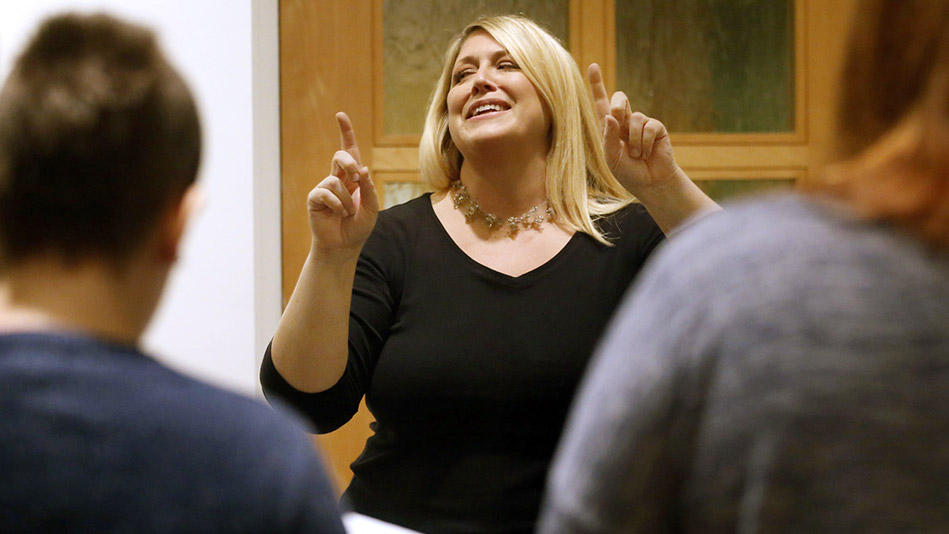The Surprising Way This Woman Is Helping the Transgender Community
Sandi Hammond wants every voice to sing loud and proud.

Photo: Steven Senne/AP
A transgender woman can slip on a skirt or make up her face. A transgender man can grow a beard or sport a bow tie. But those are surface shifts. What about less visible yet no less seismic changes—say, to the voice? "Imagine having laryngitis—forever—and being forced to speak with a voice that just wasn't you," says Sandi Hammond, artistic director of the Boston-based Butterfly Music Transgender Chorus, one of the country's few ensembles exclusively for trans singers. "That's what it can be like for trans people."
Hammond, 47, a longtime vocal coach and LGBT ally, founded Butterfly in 2014, after hearing about vocalists who'd walked away from music due to a lack of resources or support. Having taught a trans male singer 12 years earlier ("His voice had dropped, and he didn't know what to do with it—the sound was so foreign that we had to find a new range"), she suspected she might have something to offer the trans community—and she was right. Two hours after posting her idea for a chorus on Facebook, she had 120 comments.
One of Hammond's first orders of business: doing away with classic vocal designations. "Some of the lower voices in the choir fall between tenor and baritone," she says. "And I wouldn't call the higher ones soprano or alto—it's like listening to a new instrument." What does that instrument sound like? "Its color, range, and timbre are just different!" Hammond says. "But when this group sings together, it's pure joy."
Hammond, 47, a longtime vocal coach and LGBT ally, founded Butterfly in 2014, after hearing about vocalists who'd walked away from music due to a lack of resources or support. Having taught a trans male singer 12 years earlier ("His voice had dropped, and he didn't know what to do with it—the sound was so foreign that we had to find a new range"), she suspected she might have something to offer the trans community—and she was right. Two hours after posting her idea for a chorus on Facebook, she had 120 comments.
One of Hammond's first orders of business: doing away with classic vocal designations. "Some of the lower voices in the choir fall between tenor and baritone," she says. "And I wouldn't call the higher ones soprano or alto—it's like listening to a new instrument." What does that instrument sound like? "Its color, range, and timbre are just different!" Hammond says. "But when this group sings together, it's pure joy."



